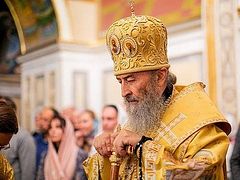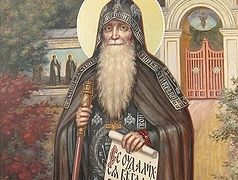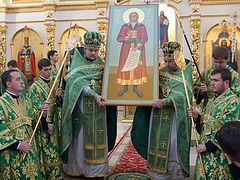Kiev, October 31, 2019
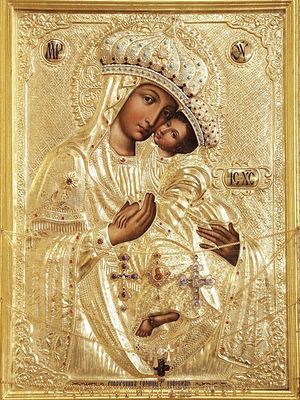 Photo: foma.in.ua The Commission for the Canonization of Saints of the Ukrainian Orthodox Church met in the Holy Dormition-Kiev Caves Lavra yesterday to examine materials related to a holy abbess of the 17th century and a wonderworking icon, reports the press service of the Kherson Diocese.
Photo: foma.in.ua The Commission for the Canonization of Saints of the Ukrainian Orthodox Church met in the Holy Dormition-Kiev Caves Lavra yesterday to examine materials related to a holy abbess of the 17th century and a wonderworking icon, reports the press service of the Kherson Diocese.
Under the chairmanship of His Eminence Metropolitan John of Kherson and Tavria, the commission considered materials concerning the possibility of locally canonizing Abbess Seraphima of Koretsky-Holy Trinity Convent (+ 1633) in the Rivne Diocese and the establishment of the celebration of the Viliya Icon of the Mother of God “of the Sign” (1889) in the Rivne Diocese.
After studying the materials, they were transferred for consideration to the Holy Synod of the Ukrainian Orthodox Church.
***
Information on Abbess Seraphim and the Viliya Icon from Foma in Ukraine:
 Holy Trinity-Koretsky Monastery today. Photo: foma.in.ua
Holy Trinity-Koretsky Monastery today. Photo: foma.in.ua
Abbess Seraphima was a princess who served as the first abbess of Holy Trinity Monastery after the invasion of Khan Meñli I Giray at the end of the 15th century. The monastery was initially built in 1064 by St. Barlaam of the Kiev Caves, though it was destroyed and resurrected several times throughout its long history.
After being ravaged by the Khan’s hordes, the monastery was revived 75 years later by Prince Euthymy and his son Joachim Koretsky. Joachim’s daughter Sophia, who received the name Seraphima in the tonsure, was appointed abbess.
The main church, of the Resurrection of Christ, took place in 1580. After 16 years, the Union of Brest was concluded, and over the next 20 years, only 9 men’s monasteries and the Holy Trinity Convent remained Orthodox out of the 57 monasteries in Volhynia. The monastery began to conduct anti-Catholic activities and soon became a stronghold of Orthodoxy and a refuge for nuns who were expelled from other monasteries by the Uniates.
Over time, a new more expensive monastery was built under Mother Seraphima’s direction, though it was soon handed over to Franciscans.
During her abbacy, in 1622, the wonderworking Koretsky “Surety of Sinners” Icon of the Mother of God was transferred to the monastery, along with the shroud of the Theotokos (a Korestky family relic).
It is also known that Mother Seraphima was acquainted with the great St. Job of Pochaev, who spent several days at the monastery in 1628, celebrating the services and holding spiritual talks with the sisters.
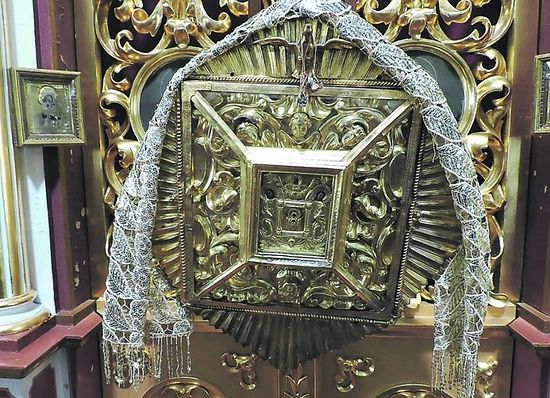 The Viliya Icon in the Church of St. Parasceva. Photo: krapka.rv.ua
The Viliya Icon in the Church of St. Parasceva. Photo: krapka.rv.ua
The Viliya Icon of the Mother of God “of the Sign” has been known since the end of the 19th century. According to tradition, the icon seemed to come out of the ground in the house of the peasant Nikolai Ostapuchuk in the village of Viliya (now in the Rivne Province) on the Thursday before the feast of Pentecost in 1889.
On March 23, 1891, it was solemnly transferred from the peasant’s house to the local church, where it became famous for working miracles.
It is now in the Church of the Great Martyr Parasceva in Viliya.

